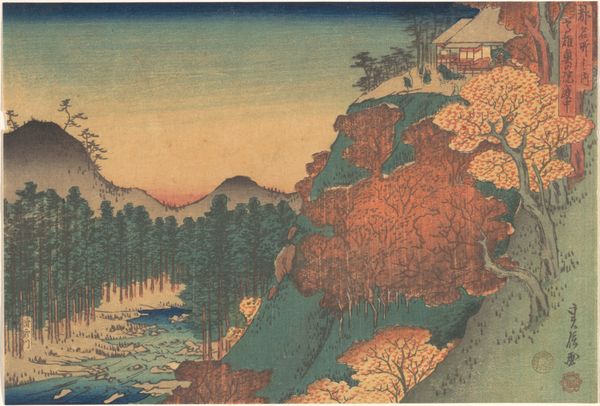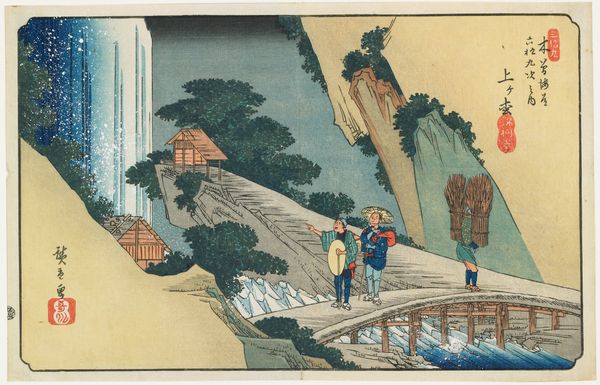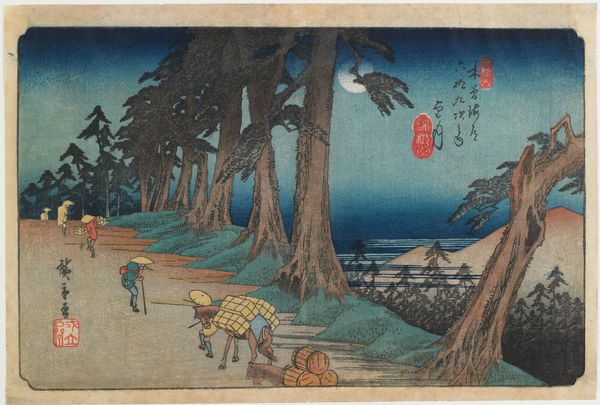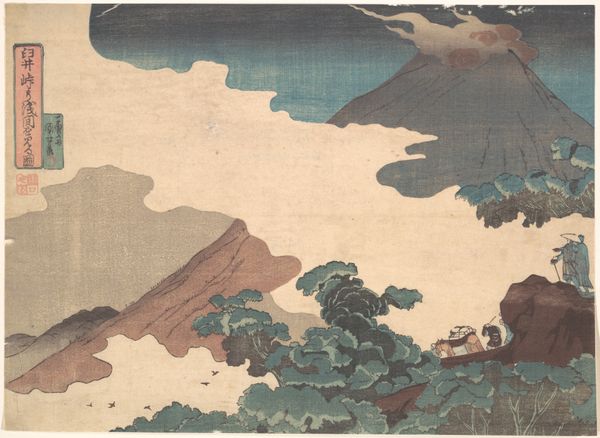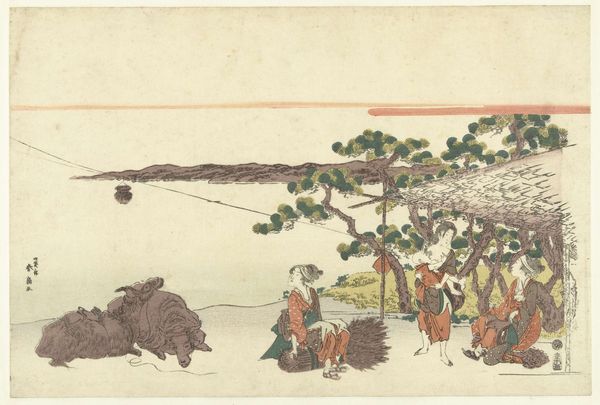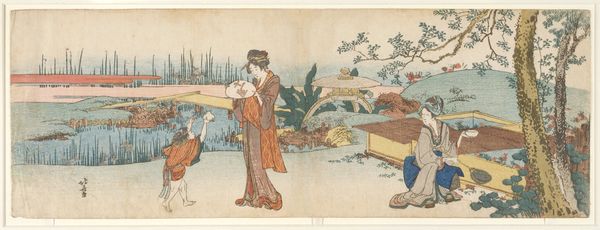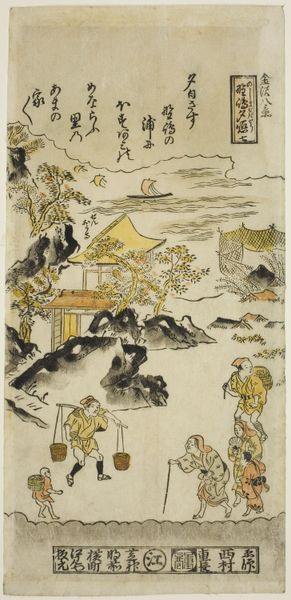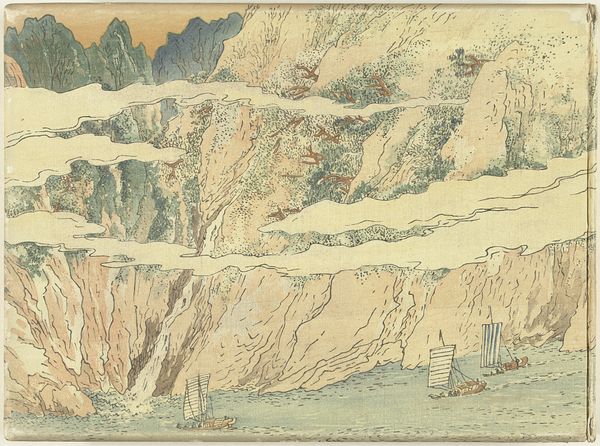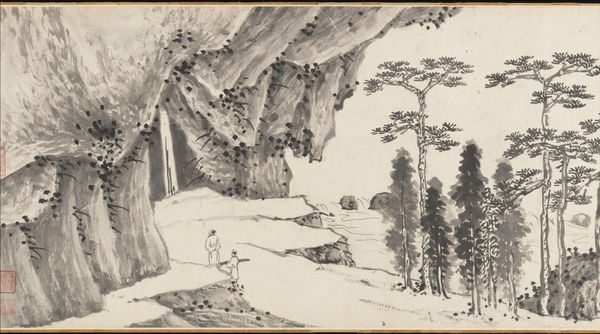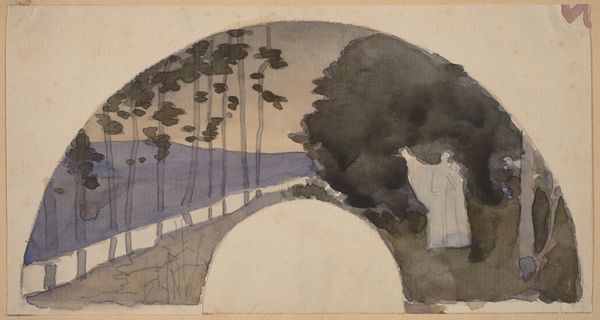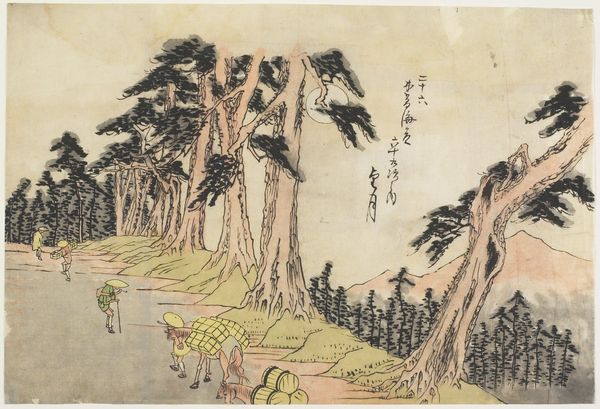
Wayfarers Looking at the Statue of Jizo Bosatsu in a Pine Grove at Hashiba 1830 - 1850
0:00
0:00
print, woodblock-print
# print
#
asian-art
#
landscape
#
ukiyo-e
#
woodblock-print
#
men
Dimensions: 10 1/8 x 14 15/32 in. (25.7 x 36.8 cm)
Copyright: Public Domain
Editor: This is "Wayfarers Looking at the Statue of Jizo Bosatsu in a Pine Grove at Hashiba," a woodblock print by Utagawa Kuniyoshi, made sometime between 1830 and 1850. It’s very serene, almost dreamlike. What strikes you most about this print? Curator: What stands out for me is the quiet intersection of the spiritual and the everyday, reflective of ukiyo-e's focus on the transient world. This print prompts us to consider the role of Buddhism, specifically the Jizo Bosatsu, a protector of travelers and the vulnerable, within the rapidly changing urban landscape of Edo period Japan. How does this representation connect to broader narratives of social welfare and spiritual solace in a time of urbanization and potential displacement? Editor: That’s fascinating! I hadn't considered the context of urbanization. Does the way the figures are positioned tell us anything about social hierarchy or interactions at the time? Curator: Absolutely. Consider the composition. The wayfarers are gazing up at the statue, seemingly seeking guidance or comfort. Their varied dress and posture may reflect different social classes and their relationships to the dominant social structures of the era. Does this piece, for you, invoke broader reflections on themes like social mobility, inequality, and the search for meaning within hierarchical societal systems? Editor: I guess I see a kind of shared vulnerability in their postures, even if their social standing differs. So it sounds like the artist is interested in the way that people of various roles are looking to this religious icon. Curator: Precisely. Kuniyoshi is highlighting how individuals from different walks of life seek refuge and meaning in shared beliefs and spiritual symbols, even within a society marked by disparities. It’s a nuanced commentary on the role of religion and social cohesion in the face of rapid change. Editor: I’m going to rethink this piece in the light of social and cultural contexts of 19th-century Japan! Thanks for the explanation. Curator: My pleasure. Art can illuminate these intersections and remind us of our shared humanity across different periods and cultures.
Comments
No comments
Be the first to comment and join the conversation on the ultimate creative platform.


